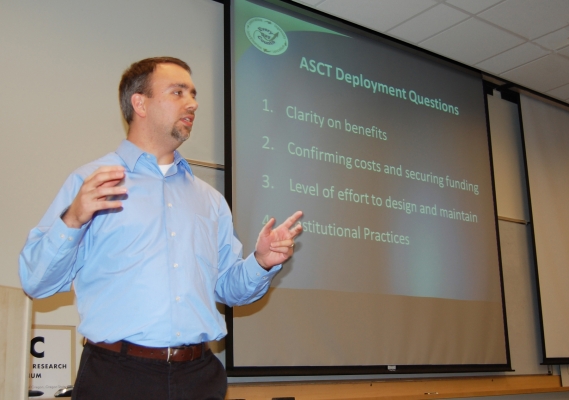Federal Highway Administration summit addresses adaptive signal control technology

Why build bigger when you can get more out of what you already have? That’s a question agencies across the country have considered as they face costly expansions of roadway systems or are unwilling or unable to keep building.
Adaptive signal control technologies offer the promise of reducing congestion, smoothing traffic flow and improving safety on existing roads. The Federal Highway Administration has been holding regional summits about this technology across the country.
Metro hosted one of the summits Dec. 1 at the Intelligent Transportation Systems (ITS) laboratory at Portland State University. Federal Highway Administration ITS specialists Paul Olson and James Colyar gave an overview of the technology, which can:
- Automatically adapt to changes in traffic
- Improve travel time reliability
- Reduce congestion and fuel consumption
- Monitor and respond to gaps in traffic signal operations
- Reduce complaints agencies get about bad signal timing
Adaptive technologies use data from sensors to adjust traffic lights, keeping the green light for as long as conditions warrant. The process updates in a few minutes what traditional signal retiming might accomplish only every few years.
The technology is best suited for arterials that receive variable or unpredictable traffic. On these roads, the signals can improve travel time, emissions and fuel consumption by 10 percent or more. Where signal timing has been particularly bad, the improvement can top 50 percent.
While still uncommon in the United States, adaptive signal systems are being installed more frequently. The technology is scheduled to come to Southeast Powell Boulevard in Portland in 2011.
